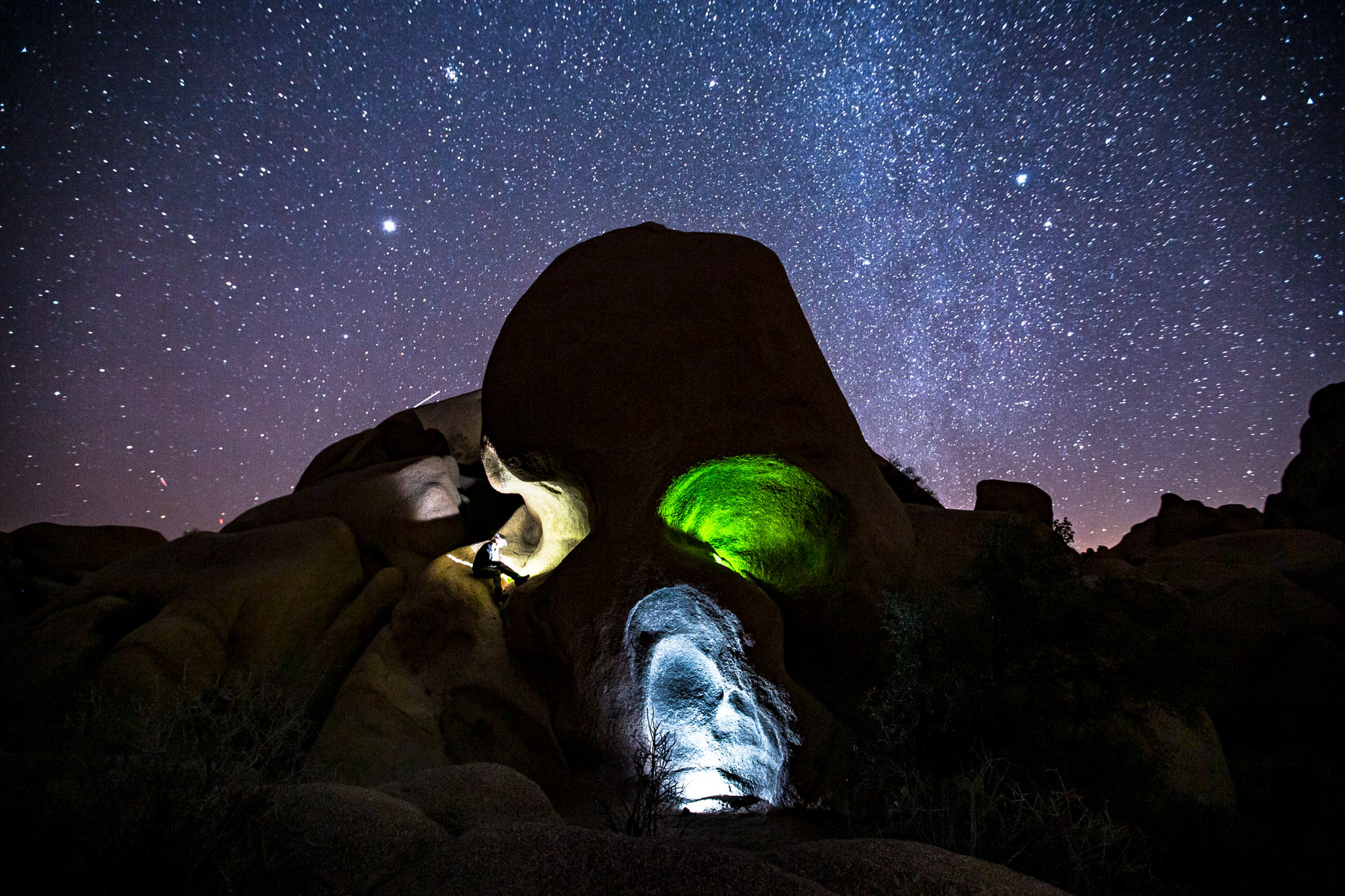
Joshua Tree National Park is a world famous American destination known for it’s wacky namesake, the Joshua Tree. It’s the iconic southwestern desert park that you’ve heard so much about and probably seen featured in countless movies, television shows, and yes, of course music videos.
Named for the one-of-a-kind trees that call the area home, Joshua Tree National Park is a true desert wonderland.
Watercolor sunsets and night skies teeming with stars, fairy tale trees and giant boulder piles, warm desert air and endless vistas, these are the hallmarks of this iconic southwestern destination.
Crowds at Joshua Tree
If you’re wondering how crowded Joshua Tree is considering it’s cultural popularity – well the answer depends of course on when you visit. The summer can see heavy visitation in the park with the major highlights and campgrounds bearing the brunt of the burden.
Finding a campsite can be extremely challenging during peak summer visitation.
The spring and fall offer better opportunities for those with time off and the need to visit this one-of-a-kind destination. During those times of year the weather is usually mild and the park feels more in balance with the visitors.
Winter sees very few visitors, but can also be quite cold, especially if you’re planning an overnight trip.
To find out when, where, and why to go to this desert wonderland – read on!
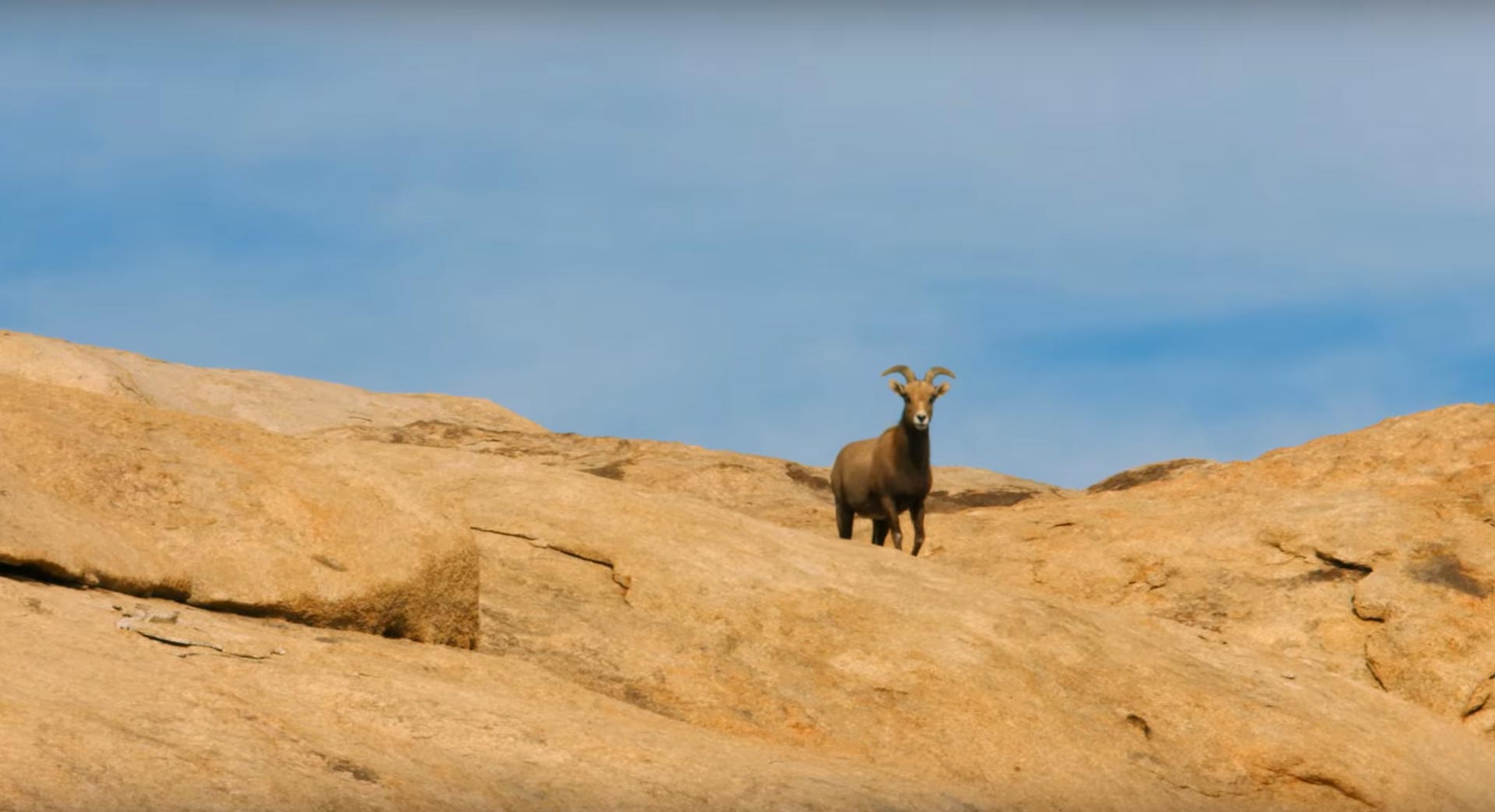
About My Travels to Joshua Tree National Park
I first traveled to Joshua Tree with my brother Will and some friends way back in 2013 on a road trip to the southwest. It was early January and the park was devoid of tourists and seemed magical.
The landscapes were otherworldly and I knew then that I would be coming back for future visits.

Making The Joshua Tree Film
Fast forward two years and another road trip out west and I found myself with cameras in tow creating what would become our Joshua Tree film.
It was another January and the nights and mornings were bitter cold and filled with the howls of nearby coyotes. Days were spent hopping boulders, exploring abandoned mines, and chasing fleeting shots of wildlife.
The park was so spectacularly quiet and devoid of other humans that it became odd to sight other cars or people outside of a campground. After a few days I soon discovered this vast expanse of desert was actually teeming with wildlife if you were willing to spend the time to become acquainted with it.
Joshua Tree is a park that will make a lasting impact on you if you take the time to experience it right, whether that’s for a day or several days. Read on and I’ll show you how to capture the magic of Joshua Tree.
Joshua Tree National Park Guide
About Joshua Tree
Joshua Tree National Park is a land of immense boulder piles, colorful cactus fields, endless desert expanses, vibrant oases, and very distinctive, eccentric yucca trees for which the park is named. This magical Mojave wonder is an landscape begging to be explored.
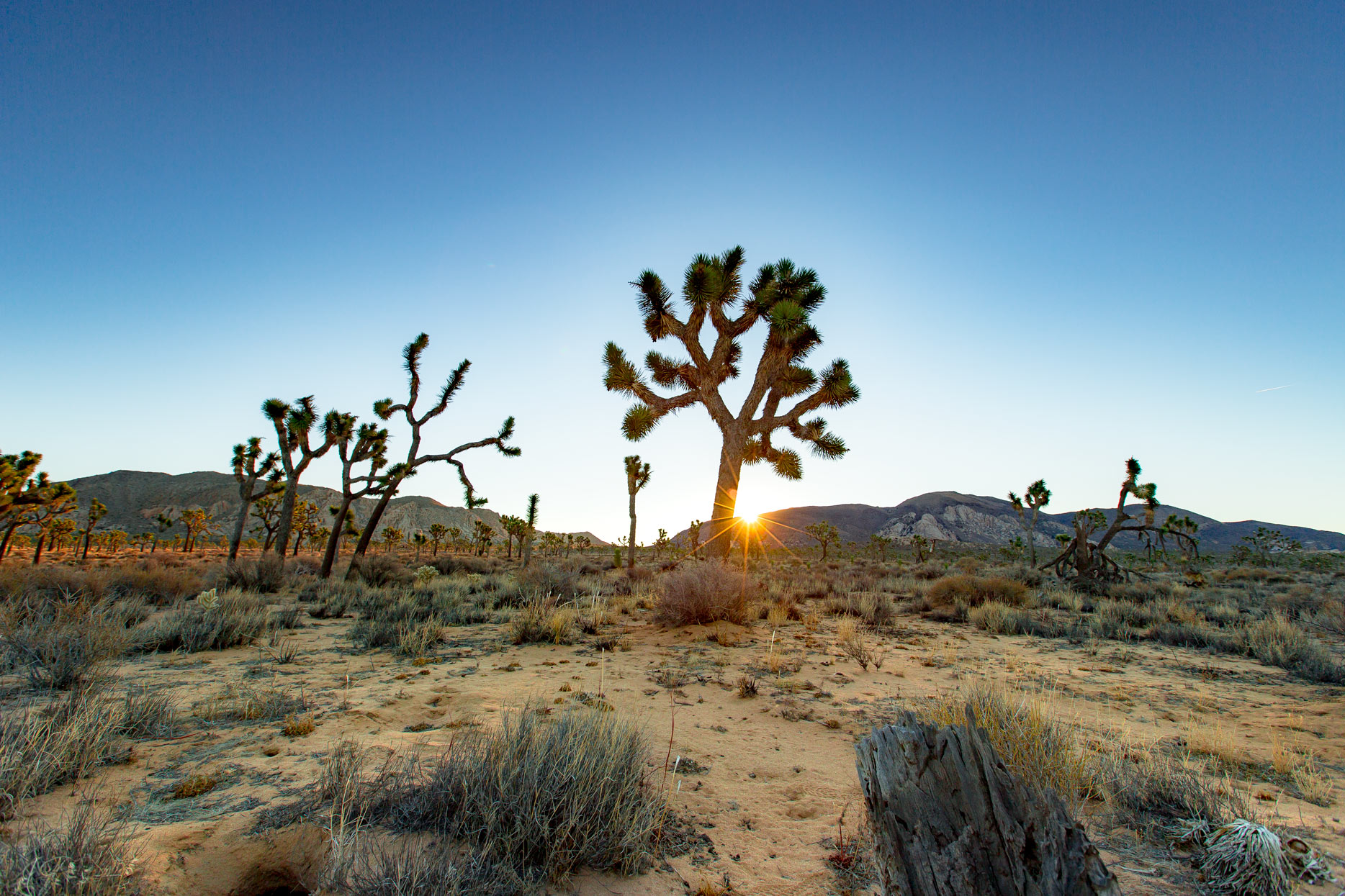
Things to Know Before You Visit Joshua Tree
Entrance Fees: $30
Best Map
This map is a great one that we use.
Best Guidebook
James Kaiser is the proverbial bees knees in this department. I love all of his National Park guides and his Joshua Tree Guide Book is no exception.
Getting Around
Joshua Tree is a very accessible park with the main park road taking visitors through various viewpoints, hiking opportunities, and interesting sites. Any vehicle will do on the main park road, but you’ll need a 4WD high-clearance vehicle for some of the unpaved and off-the-beaten-path roads in the park. Either way prepare for some scenic driving! The park does get very busy in the Summer so be prepared for limited parking in the more popular areas and full campgrounds.
Lather up!
Sunscreen: Visiting national parks during certain times of the year can mean lots of sun. Seriously, some of these parks can zap you if you don’t wear sunscreen. We happen to like this one because it works AND it’s not full of a bunch of chemicals.
Leave No Trace
We’re big fans of Leave No Trace, here at MTJP. Want to learn more? Read about the seven principals of Leave No Trace here.
Bugs & Mosquitoes
Insect Repellent: You hope not to need it, but you want to have it. We typically bring an Eco-Friendly Insect Repellent with us just in case.
Dogs
Dogs are not allowed on trails in most national parks due to their potentially disruptive presence with the natural ecosystem. The basic rule is they are allowed where cars can go so be sure to check the rules before bringing along your furry friend.
Where to Stay
Visiting Joshua Tree National Park? If you haven’t decided where to stay (yet) check out our helpful guide on visiting Joshua Tree National Park for tips. Don’t have time? Here’s our favorite hotel near Joshua Tree.
Basic Facts About Joshua Tree National Park
Location: California
Established: October 31, 1994
Size: 790,636 acres
Visitors: 2,942,382 (2020)
Entrance Fees: $30/vehicle
The History of Joshua Tree National Park
Like so many other national parks, the story of Joshua Tree National Park can trace its origins to the foresight and dedication of one person. For Joshua Tree National Park that woman was Minerva Hoyt.
In the early 1900’s Minerva Hoyt became deeply interested in the California desert and its native plants after having moved to the state at the end of the 19th century. After the death of her husband in 1918, Minerva threw herself into an effort save these desert plants and landscapes from what she saw as an increasing threat of destruction from development.
Hoyt campaigned tirelessly for the preservation of many of California’s unique desert landscapes, including Death Valley, Anza-Borrego Desert, and Joshua Tree. In 1930 she created the International Desert Conservation League to further campaign for the protection of Southern California’s deserts.
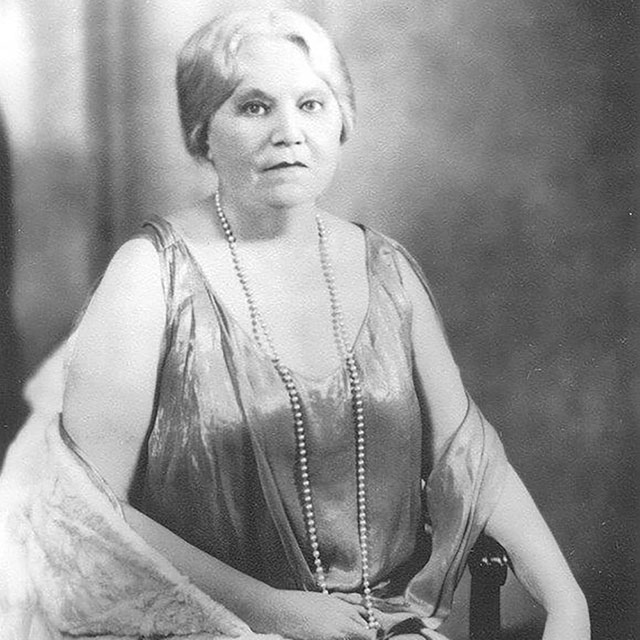
A Change in Fortunes
After years of trying in vain to secure the protection of Joshua Tree, Minerva Hoyt’s pleas finally met a receptive audience in President Franklin Roosevelt, an ardent conservationist himself. In 1936, with the stroke of his pen, Roosevelt proclaimed Joshua Tree National Monument, setting aside over 800,000 acres of precious California desert.
In 1950 Joshua Tree underwent a different change in fortunes when the Truman administration reduced the size of the monument by more than 280,000 acres to allow for mining in the area.
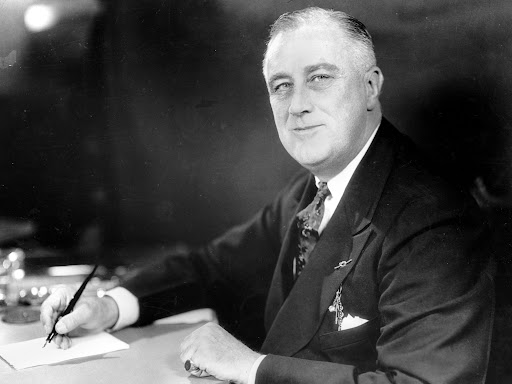
Establishing Joshua Tree National Park
Fast forward to 1994, Senator Dianne Feinstein of California introduced the California Desert Protection Act, a bill based on earlier one’s proposed by former Senator Alan Cranston. The bill would create Death Valley National Park, the Mojave National Preserve, and would elevate Joshua Tree National Monument to a national park while adding an additional 234,000 acres to the park.
The bill passed both chambers and was signed into law by President Bill Clinton on Halloween Day in 1994. An additional 4,518 acres was added to the park in 2019 under the John D. Dingell Jr. Conservation, Management, and Recreation Act.
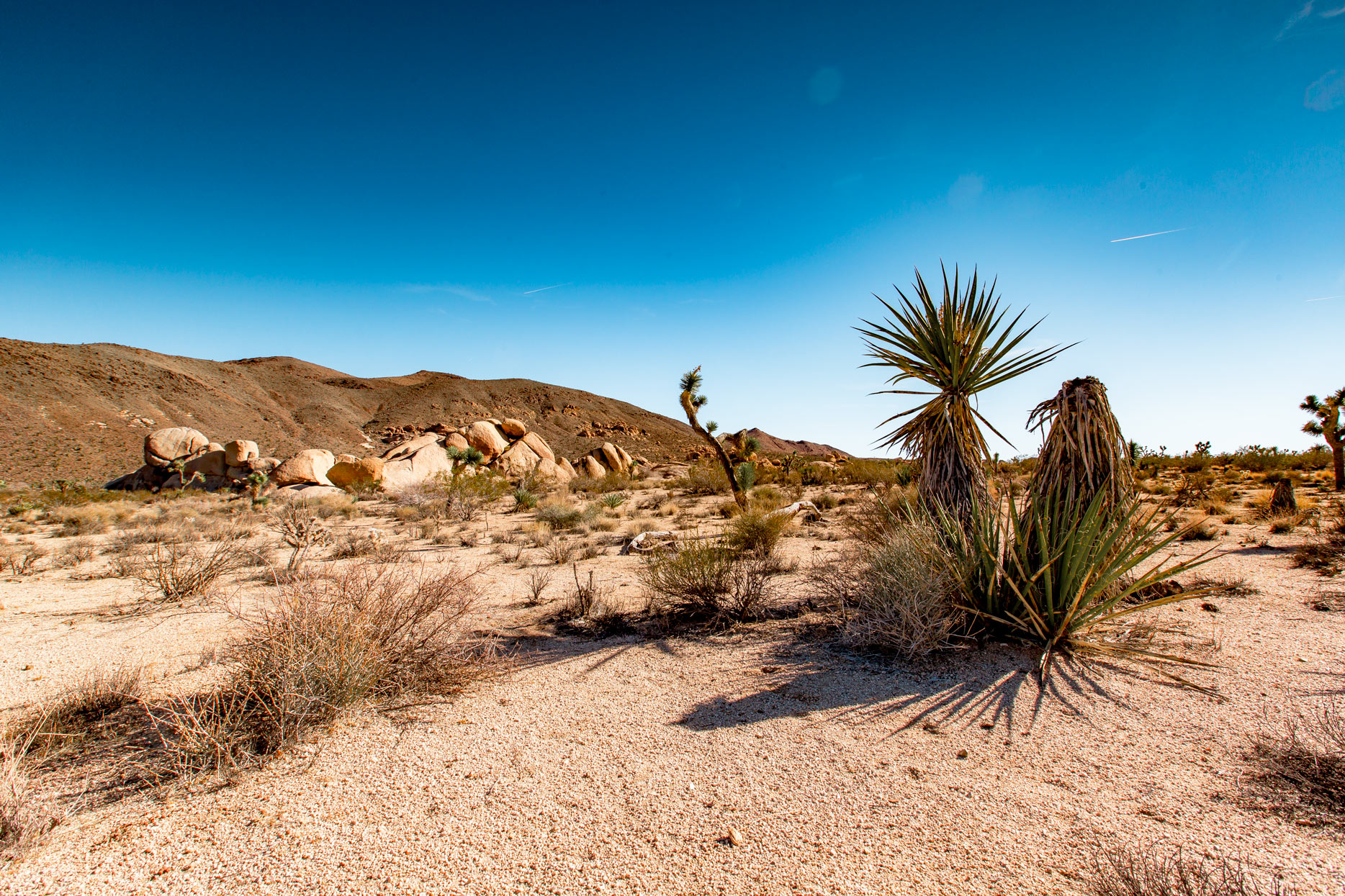
Joshua Tree National Park Map
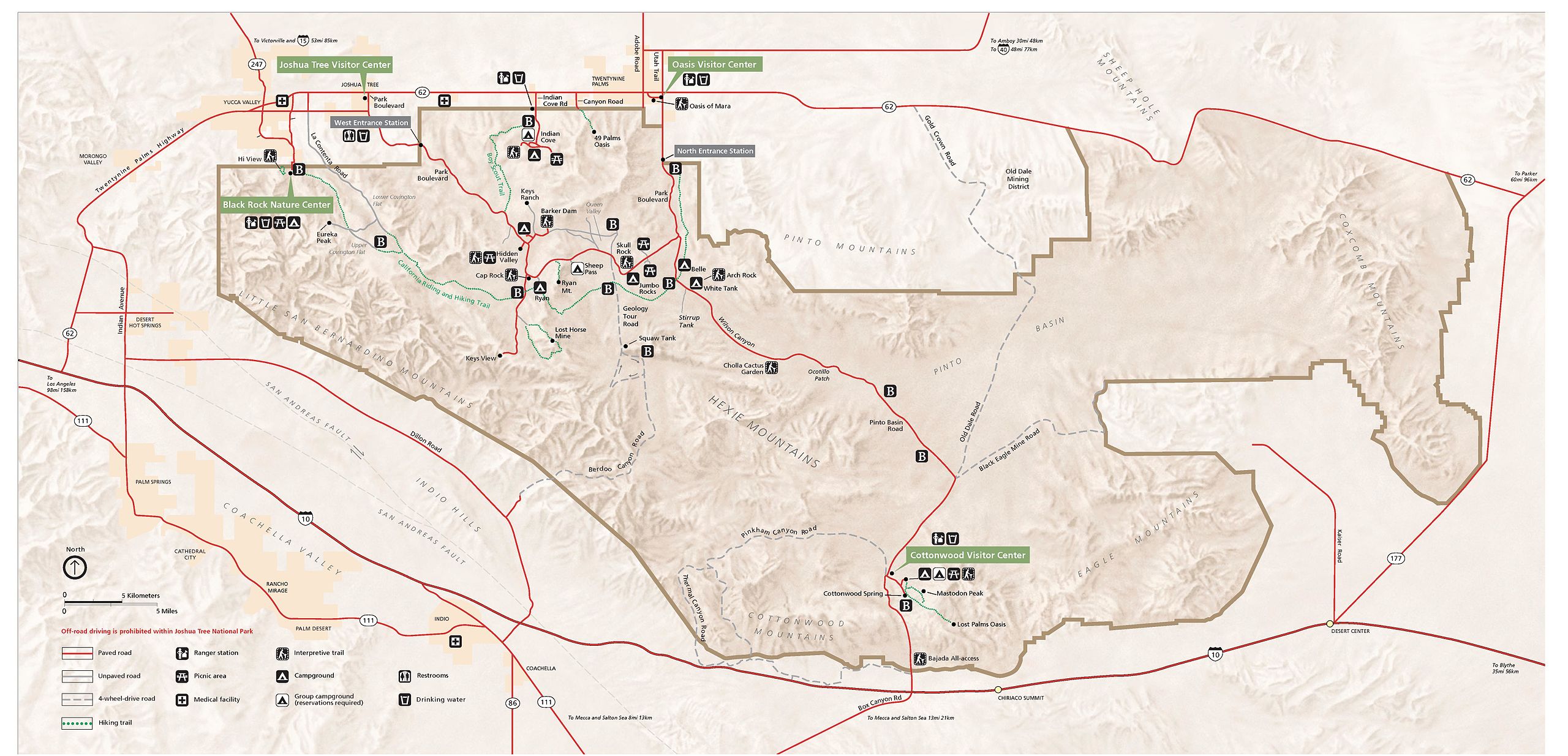
Where is Joshua Tree National Park?
Joshua Tree National Park is nestled in the Southern California desert about 40 minutes east of the sprawling desert city of Palm Springs.
Getting to the Park – Directions & Location
Closest Airport: PSP – Palm Springs International Airport (Palm Springs)
The fastest way to get to Joshua Tree National Park of course depends on where you’re coming from, but it’s probably safe to say it’s by flying into Palm Springs. From Palm Springs you can rent a car and be in the park in under an hour without trouble.
The most affordable way to get to Joshua Tree, other than driving, is most likely by flying into LAX or San Diego International Airport and then renting a car. Yes you’ll likely have to deal with hellish traffic, but you’ll get the cheapest prices on both flight and rental cars.
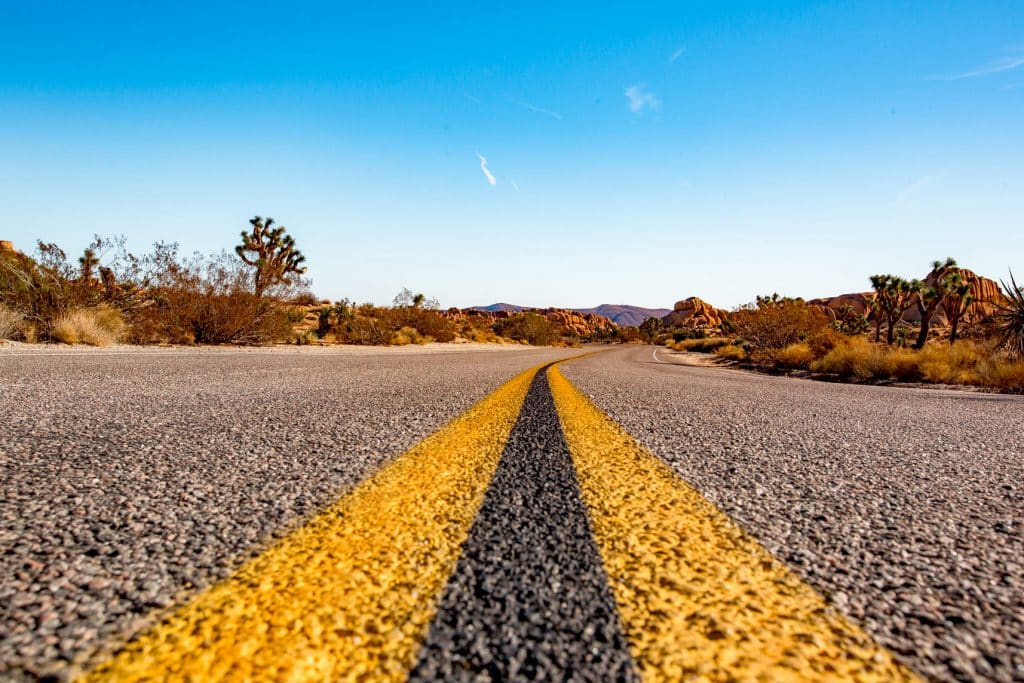
Navigating the Park
Joshua Tree is an easy park to navigate from your car. There’s really only one main road that takes you through the park with a few other options to different trails or areas.
There are a few 4WD high-clearance roads in the park that will get you out away from the main roads and crowds without having to hike. It’s important to note though that in Joshua Tree when they say 4WD high-clearance, they mean it. Some of those roads are nasty.
Things to Keep in Mind While Visiting Joshua Tree
Please Recreate Responsibly! Joshua Tree has become somewhat notorious as a destination for miscreants who enjoy defacing or otherwise degrading park property. I know those of you reading this aren’t those people, but lets all make sure we follow signs, keep our trash to ourselves, and respect this beautiful place.
Be Safe on Those Trails! Seriously, Joshua Tree has had an epidemic of missing hikers in recent years due in part to increased visitation, unpreparedness, and very unforgiving terrain. Always remember to use the buddy system out here, bring plenty of water, tell others where you’re going, and always have a plan.
4WD High-Clearance Really Means it Here. Think again before pushing your sedan onto some of the back roads here labeled 4WD. I’ve seen firsthand the carnage these roads can wreak on ill-equipped vehicles.
Palm Springs is a great base-camp for those who can’t find a campground or prefer such creature comforts as a bed and running water. Boasting a vast array of amenities and only 40 minutes from the park, it’s a rare city next to a beautiful national park. Best to take advantage of it for food, lodging, and more.
Watch the Award-Winning Joshua Tree Video
MTJP | Joshua Tree is the culmination of nearly a month spent exploring Joshua Tree National Park. We chose Joshua Tree because of its fascinating and unique landscape. Its immense boulder piles, colorful cactus fields, endless desert expanses, and one-of-a-kind Joshua trees make for a spectacular setting. This film was shot entirely in 4K.
Best Time to Visit Joshua Tree National Park
Knowing when to visit Joshua Tree is critical to making the most out of your trip to this beautiful desert park. Each season brings it’s own unique opportunities and potential challenges. Luckily I’ve seen it all so I’ll give you the low-down on the best and not-so-best times to visit.
The best time of year to visit Joshua Tree National Park is February through May when visitation is down and temperatures are mild for a more intimate experience. During this time of year daily highs are in the mid 60s to low 70s while lows can drop down to freezing.
Despite the cold lows, the park warms up every day and almost always has abundant sunshine to shower visitors with.
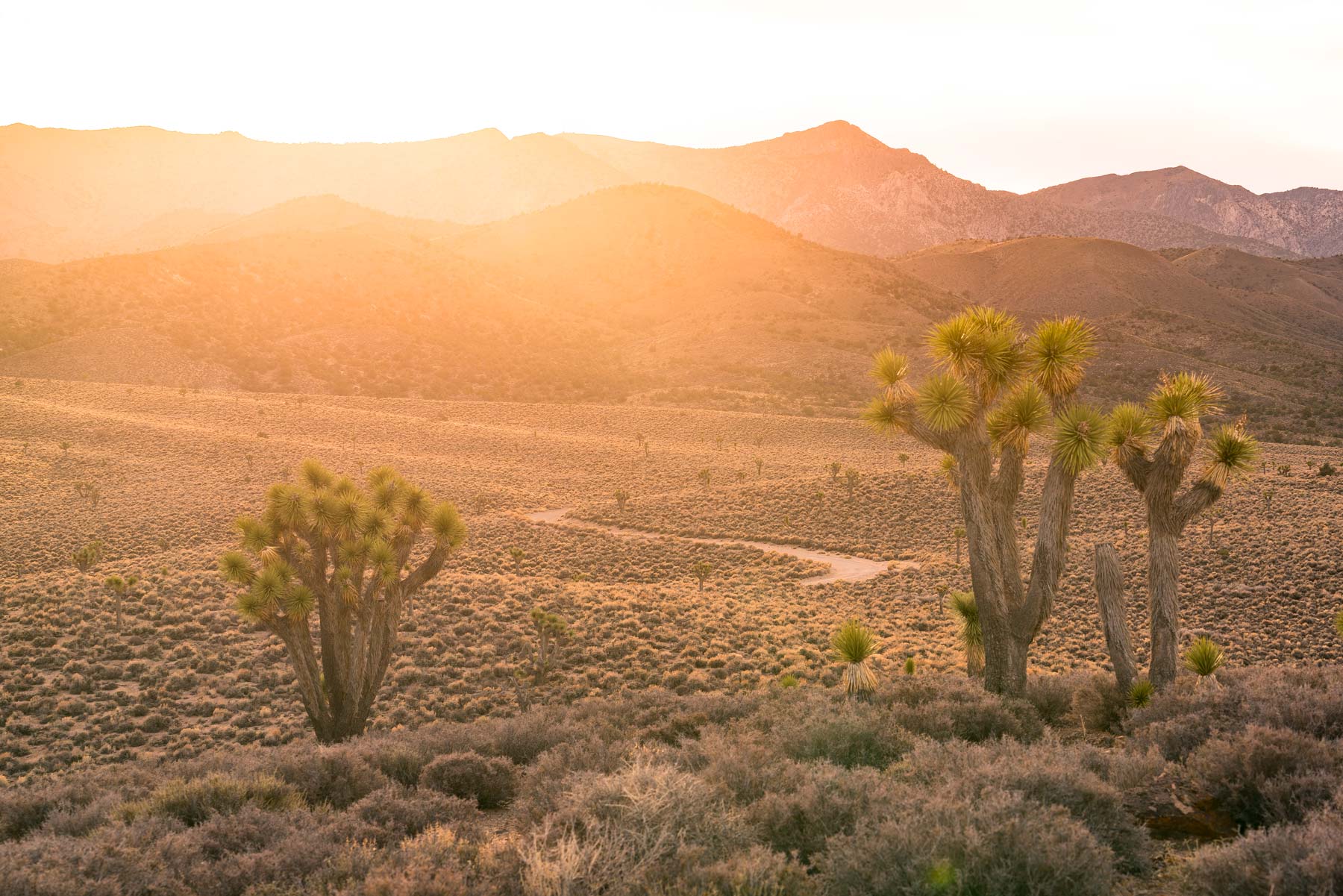
Joshua Tree Seasons & Weather
Spring in Joshua Tree National Park
The best season to visit Joshua Tree National Park is Spring when temperatures are warming up but not hot and and crowds are down.
Spring is great because visitors can still soak in abundant stargazing with long nights and much fewer visitors to compete with for solitude. Interested in learning more about the seasons of Joshua Tree National Park? We’ve listed detailed information on each one below.
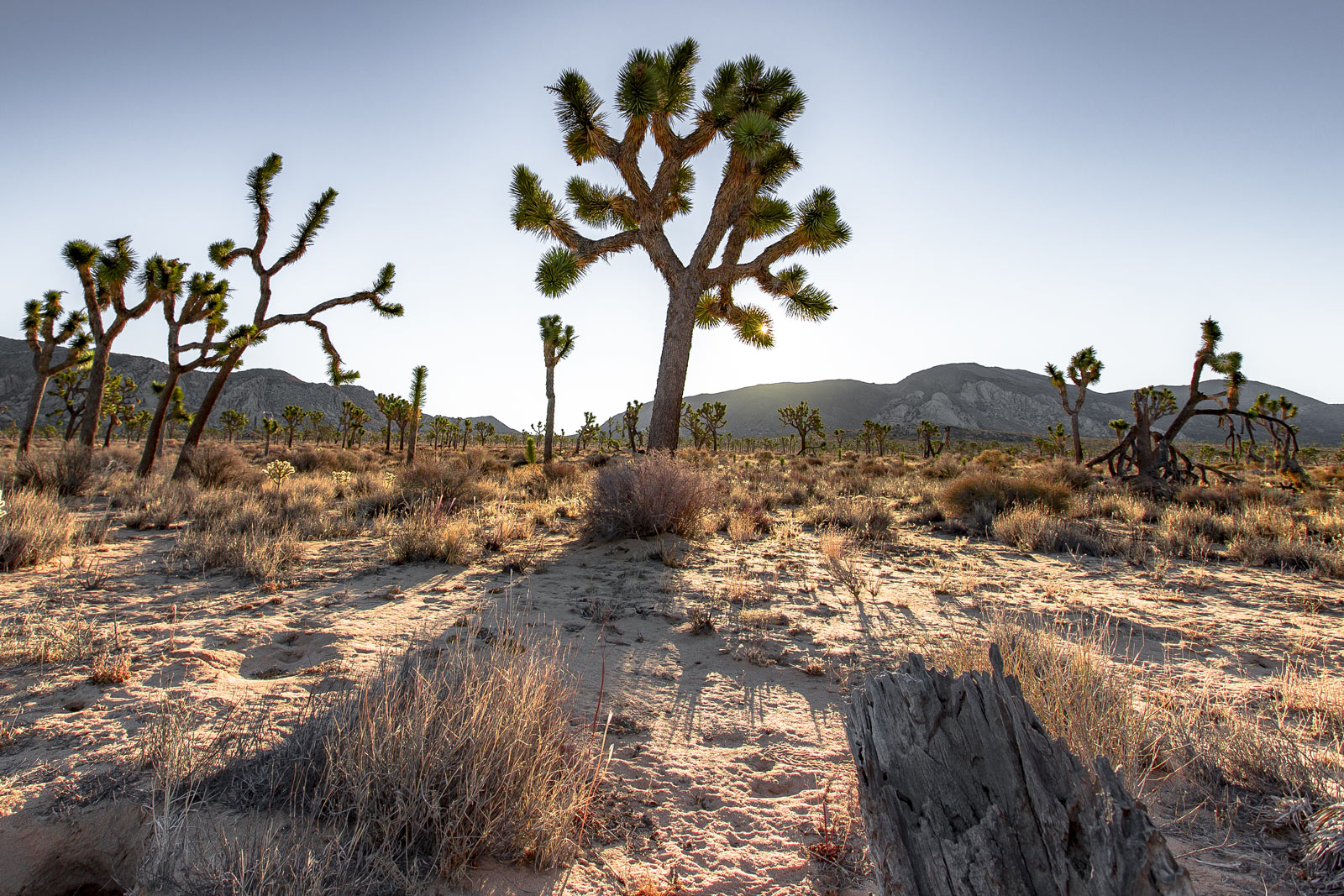
Summer in Joshua Tree National Park
Summer in Joshua Tree is HOT. No it’s not Death Valley, but temperatures routinely soar into the triple digits here and hiking can be seriously dangerous. That said, if you bring plenty of water, sunscreen, food, wear the proper clothing, and avoid hikes during midday you should be fine.
Nights are very pleasant in the summer and of course Joshua Tree always provides stellar stargazing opportunities.
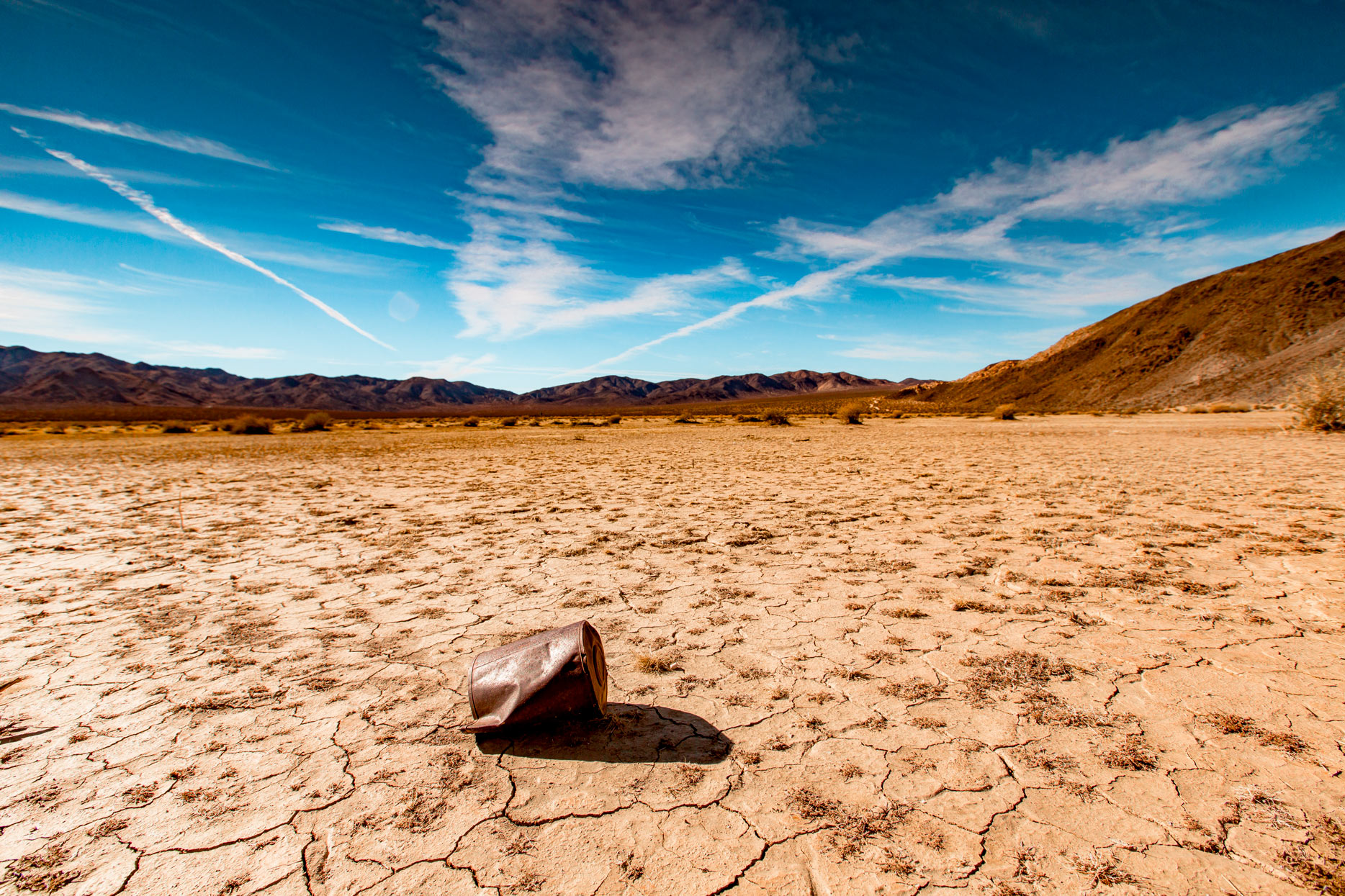
Fall in Joshua Tree National Park
Fall in Joshua Tree is an underrated season with visitation dwindling, temperatures cooling off but still warm, and abundant sunshine. Most folks don’t think of Joshua Tree as a “premiere fall destination” and for that reason crowds disappear leaving the park with more solitude. High temperatures during fall can still hit 90.

Winter in Joshua Tree National Park
Winter is wonderful in Joshua Tree with high temperatures still hitting the mid 60s, abundant sunshine, and less crowds. The winter months bring more solitude to a usually very popular park. If you don’t mind the near-freezing low temperatures, camping during this time of year is also a treat.
Despite the fact that Joshua Tree is a desert park, light snowfall is not out of the ordinary during the winter months.
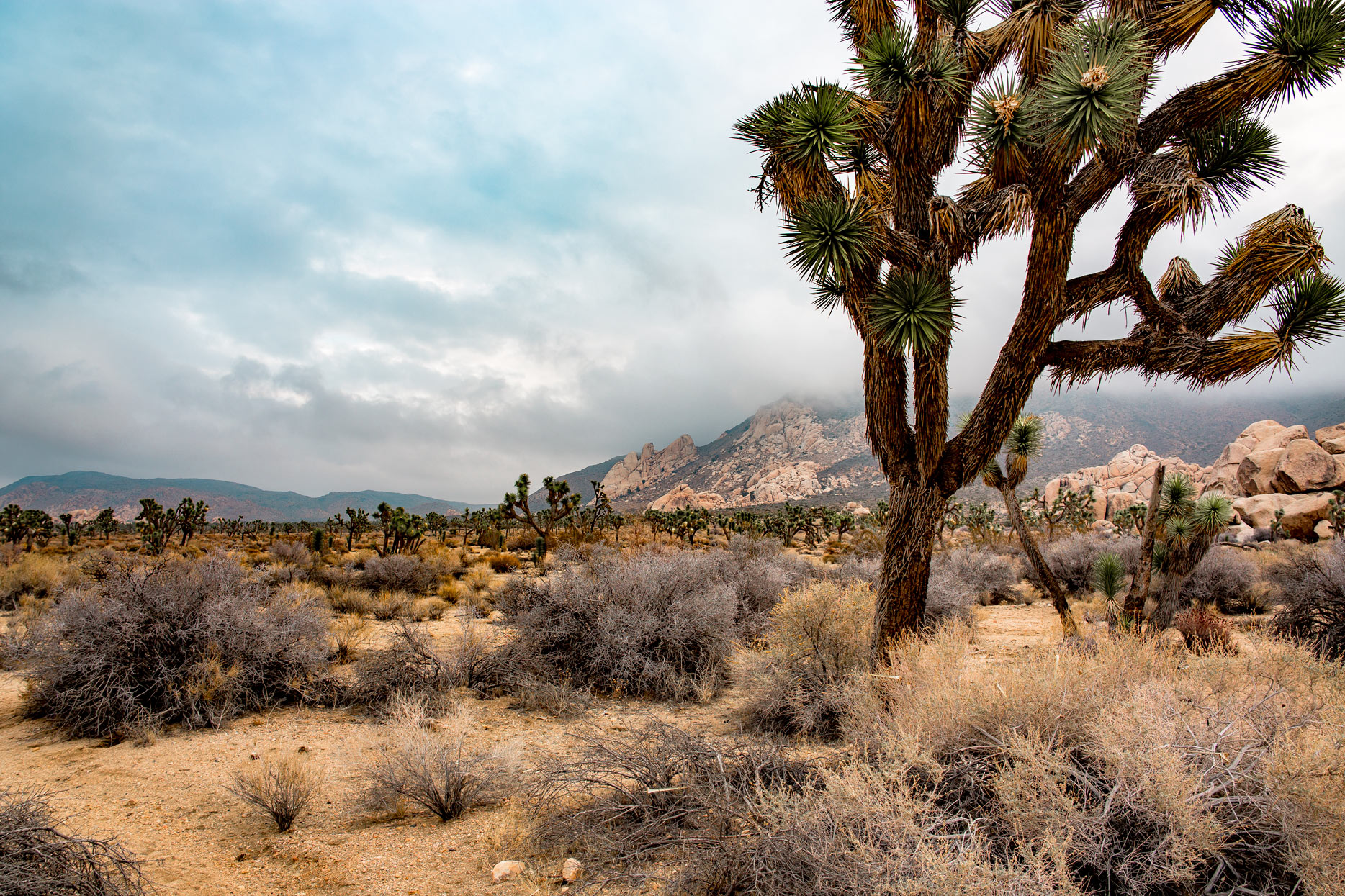
Best Things to Do in Joshua Tree National Park
1. Explore Hidden Valley
Hidden Valley is home to one of the largest and most beautiful Joshua Tree forests on the planet with some of the craziest looking trees you’ll lay your eyes on. A hike through this unique and otherworldly landscape is a must for everyone visiting the park.

2. Take in a Sunset at Cottonwood Springs Oasis
Of all the places to watch a sunset in Joshua Tree National Park, our favorite may be from one of the lesser visited areas of Cottonwood Springs.
Birds of prey including hawks and kestrels soar overhead while the sky above lights up with the setting sun making for a dazzling display.
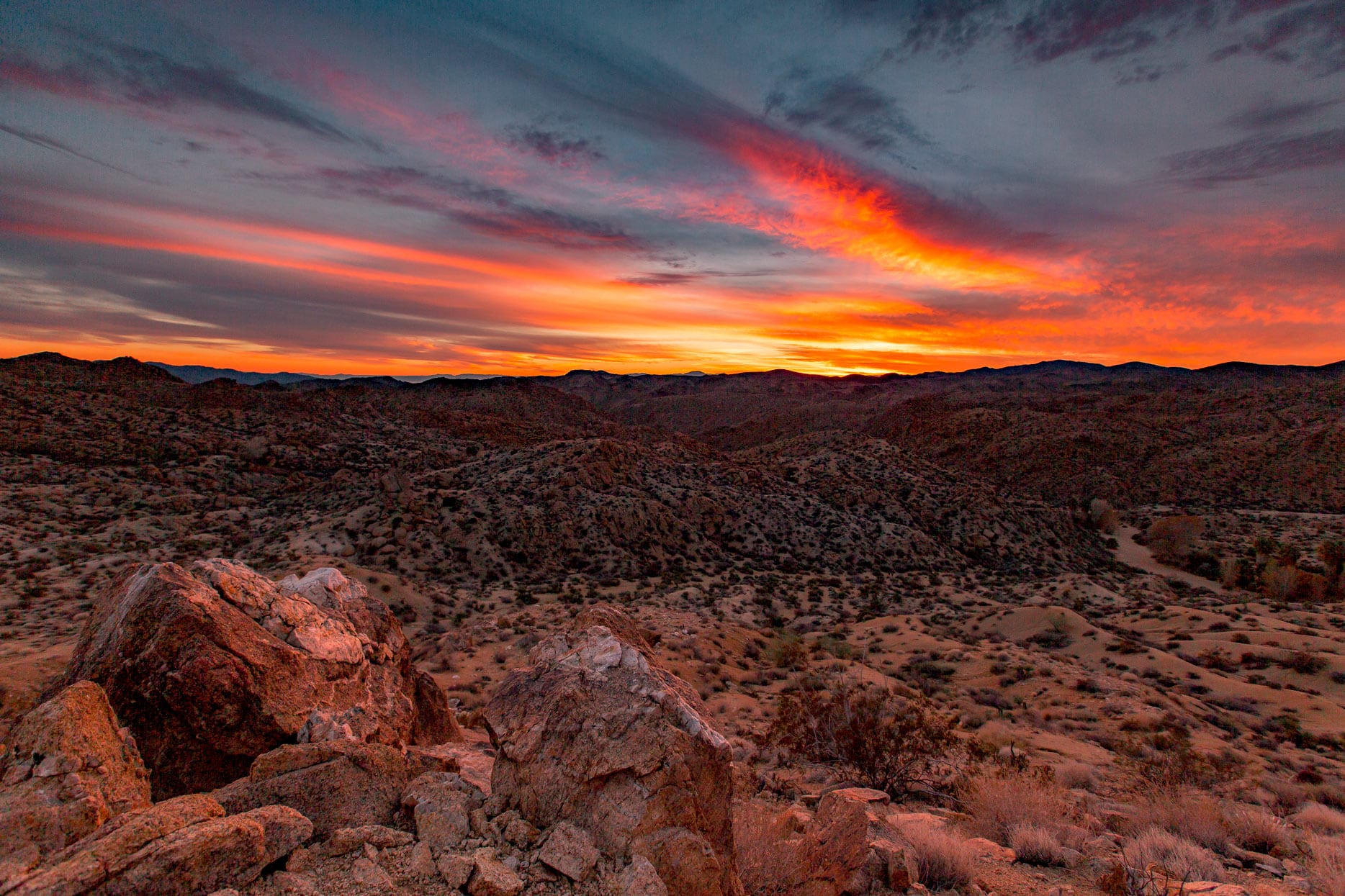
3. Half the Park is After Dark
Some of the best stargazing in the country happens every night in the crown jewel of the Mojave, Joshua Tree National Park.
It’s hard to choose a bad spot in this park to simply gaze up at the galaxy around you through one of the darkest skies you’ll find in America.
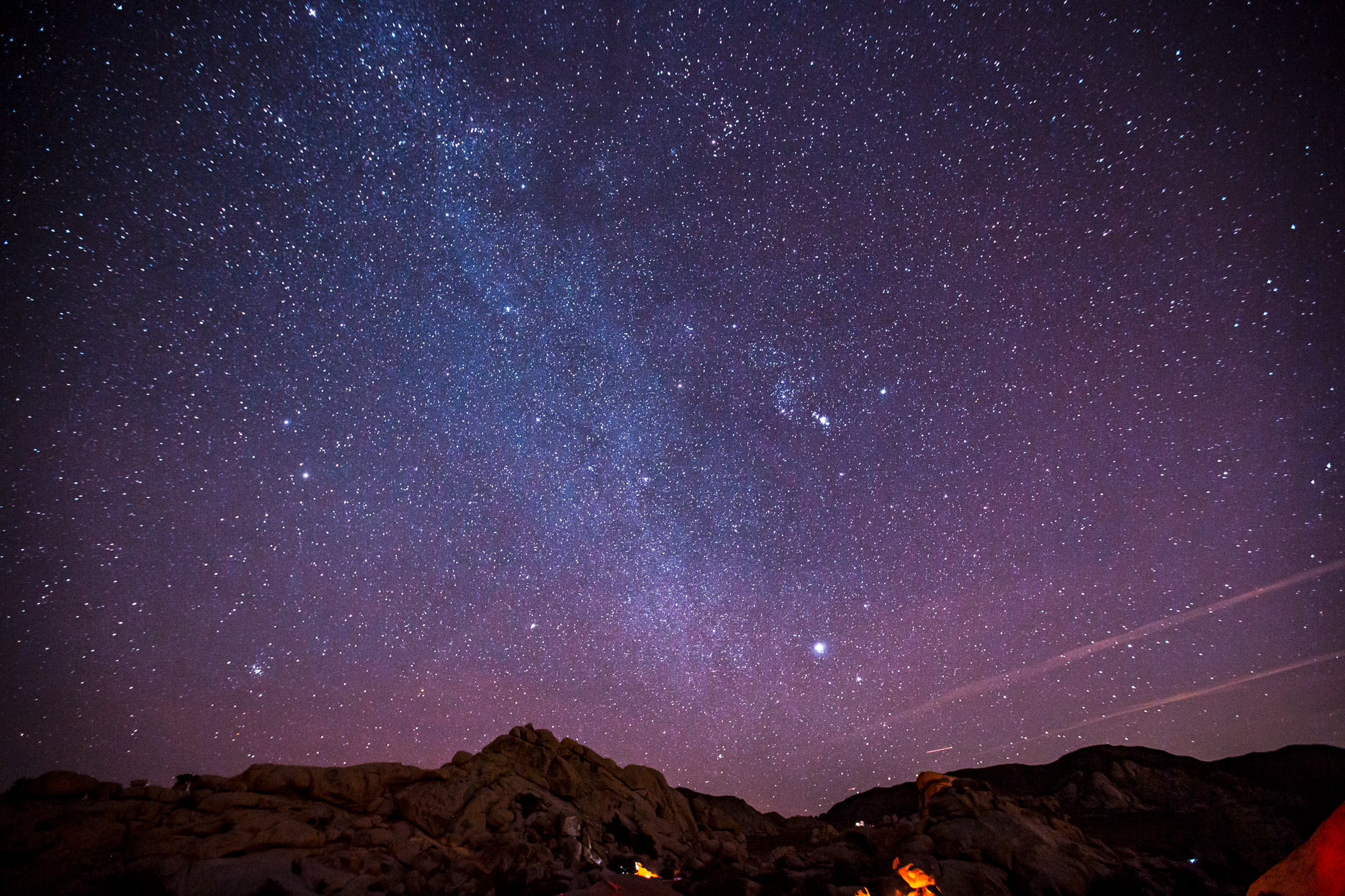
4. Discover Arch Rock
This 30ft natural arch is one of the most popular and heavily photographed spots in all of Joshua Tree National Park – and it makes sense why! It’s pretty darn cool! The hike to the arch is great as well. Add this one to your list for sure.

5. Go Camping
Come on, this is why you go to Joshua Tree. The opportunity to pitch a tent and sit by a crackling fire in this desert paradise is something we all dream about. And let me assure you it does not disappoint.
And while you’re sitting by that fire and gazing up at the starry sky, don’t forget to enjoy the late night howling of the park’s many coyotes. They sound awfully close, and that’s because they most definitely are! But not to worry, these desert scavengers are friends.
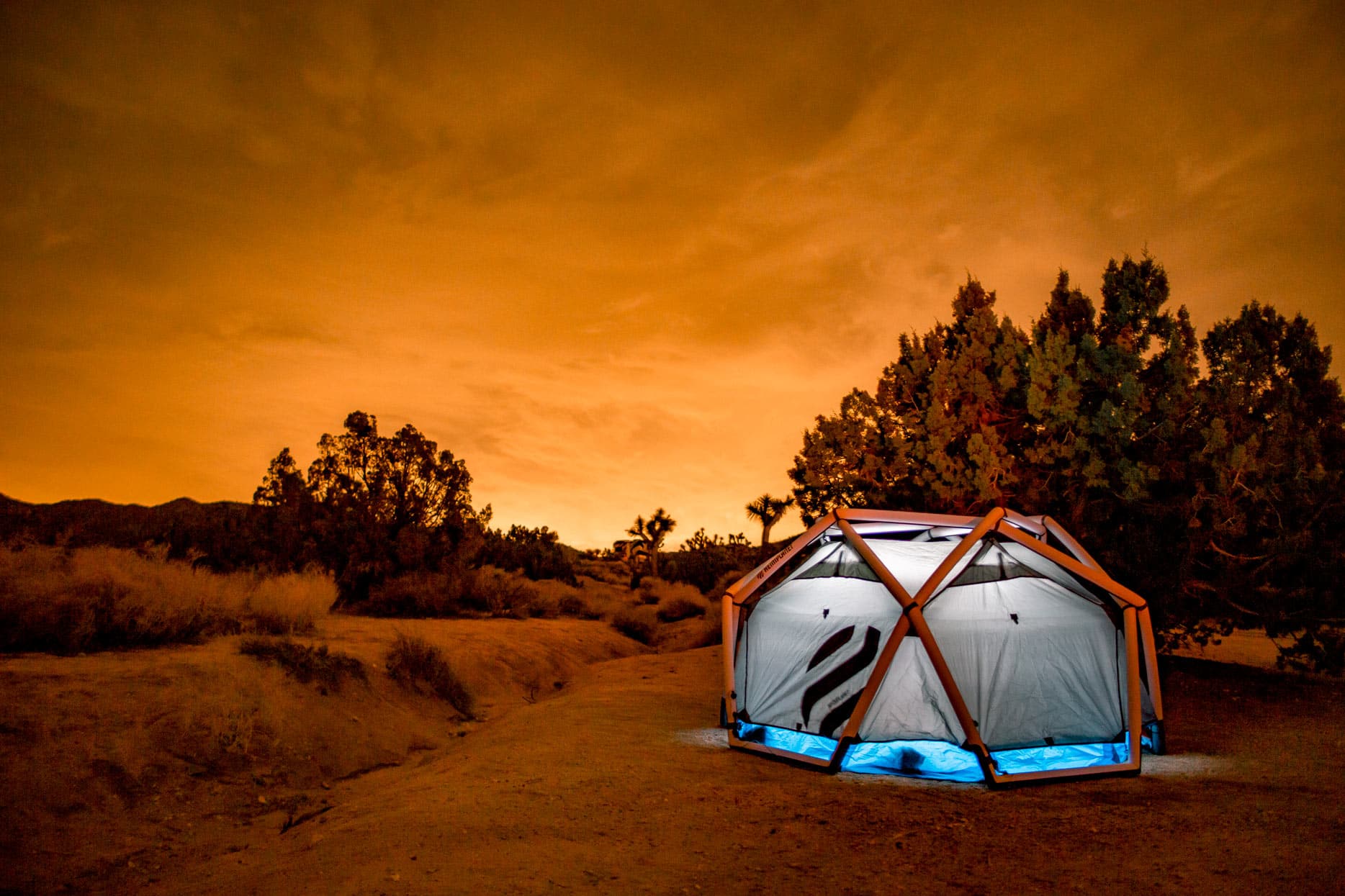
Where to Stay at Joshua Tree National Park
Joshua Tree National Park is home to some of the best desert camping in the world with 8 beautiful campgrounds and over 500 campsites. Individual campsites here are wonderfully laid out with amazing natural beauty featuring rock alcoves and desert vegetation.
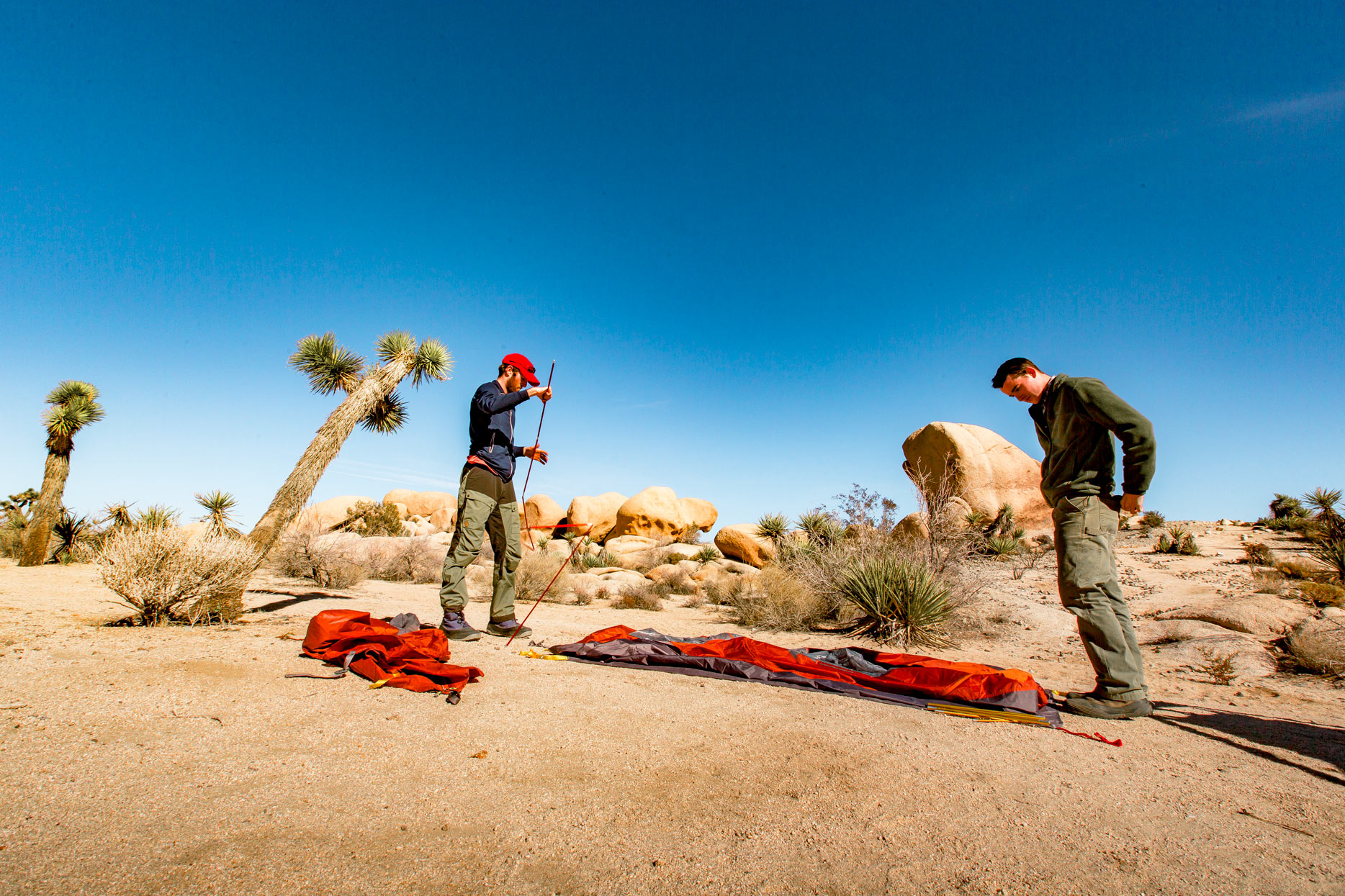
Campgrounds at Joshua Tree National Park
Joshua Tree Campgrounds
Joshua Tree has eight campgrounds, and frankly they’re all great. I should note that during peak season, and these days most any time, they fill up very fast.
Belle Campground
Belle Campground, is a small campground located off of Pinto Basin Road nearest the Twentynine Palms Entrance. This campground, like many others features beautiful natural scenery with massive boulders providing privacy between campsites. Open from May 15 – October 15.
Black Rock Campground
Black Rock Campground is located on the far west side of the park, disconnected from the other sections. The Black Rock is another beauty featuring Joshua Trees in the campsites, lots of room to spread out, scenic desert views, and natural privacy.
Cottonwood Campground
Cottonwood Campground is not quite as scenic as some of the others in Joshua Tree National Park and has less natural privacy than most of the campgrounds in the park but is still a great place to camp.
This campground is located on the southern end of the park near to the Cottonwood Spring Oasis.
Hidden Valley Campground
Hidden Valley Campground is one of the most popular and sought after campgrounds in all of Joshua Tree National Park with an ideal location near the main park attractions and beautiful scenery all around.
This campground has lots of natural privacy via the boulder field it’s situated in and amazing bouldering opportunities for climbing enthusiasts.
Indian Cove Campground
Indian Cove Campground is a beautiful albeit isolated campground located in the separate Indian Cove section of the park.
Like many other campgrounds it’s situated amongst a large boulder field with lots of natural privacy. Indian Cove has lots of great hiking and bouldering opportunities.
Jumbo Rocks Campground
Jumbo Rocks Campground is the largest and most popular campground in Joshua Tree National Park with 124 sites. The campground is centrally located off the main Park Boulevard near all of the most popular park attractions.
This campground is nestled in a beautiful boulder field with lots of opportunities to explore, climb, and enjoy. Some say Jumbo Rocks is the most picturesque campground in Joshua Tree National Park.
Ryan Campground
Ryan Campground is one of Joshua Tree National Park’s smaller campgrounds at 31 sites that is very popular for rock climbing and bouldering enthusiasts.
The campground is located on the north end of the park next to Ryan Ranch and features beautiful natural scenery. Ryan is reservation only and one of two campgrounds in the park friendly to equestrian activities.
White Tank Campground
White Tank Campground is the smallest and yet one of the more popular campgrounds in Joshua Tree National Park.
Located off of Pinto Basin Road on the east side of the park, White Tank is not as centrally located as some of the others but is one of the most beautiful with stunning rock formations surrounding the campground. The famous Arch Rock natural arch is located a short walk from the campground.
Lodging & Hotels at Joshua Tree National Park
While Joshua Tree doesn’t have any lodges within the park, the nearby city of Palm Springs offers a vast array of lodging accommodations to suit any need. The even closer towns of Twentynine Palms, Joshua Tree, and Yucca Valley also offer lodging options for those wanting to stay closer to the park.
Hotels in the immediate vicinity of the park include:
Joshua Tree Restaurants
There are no restaurants within Joshua Tree National Park, but the nearby city of Palm Springs has pretty much anything you could possibly want from groceries to restaurants to bars.
My Favorite Spot in Joshua National Park
There’s something about the colors at sunset in the White Tank area that are especially beautiful not to mention the stars that come later.
This area is home to such park favorites as Arch Rock and the campground at White Tank is one of the best in the park. Be sure to check out this great spot when you visit Joshua Tree.
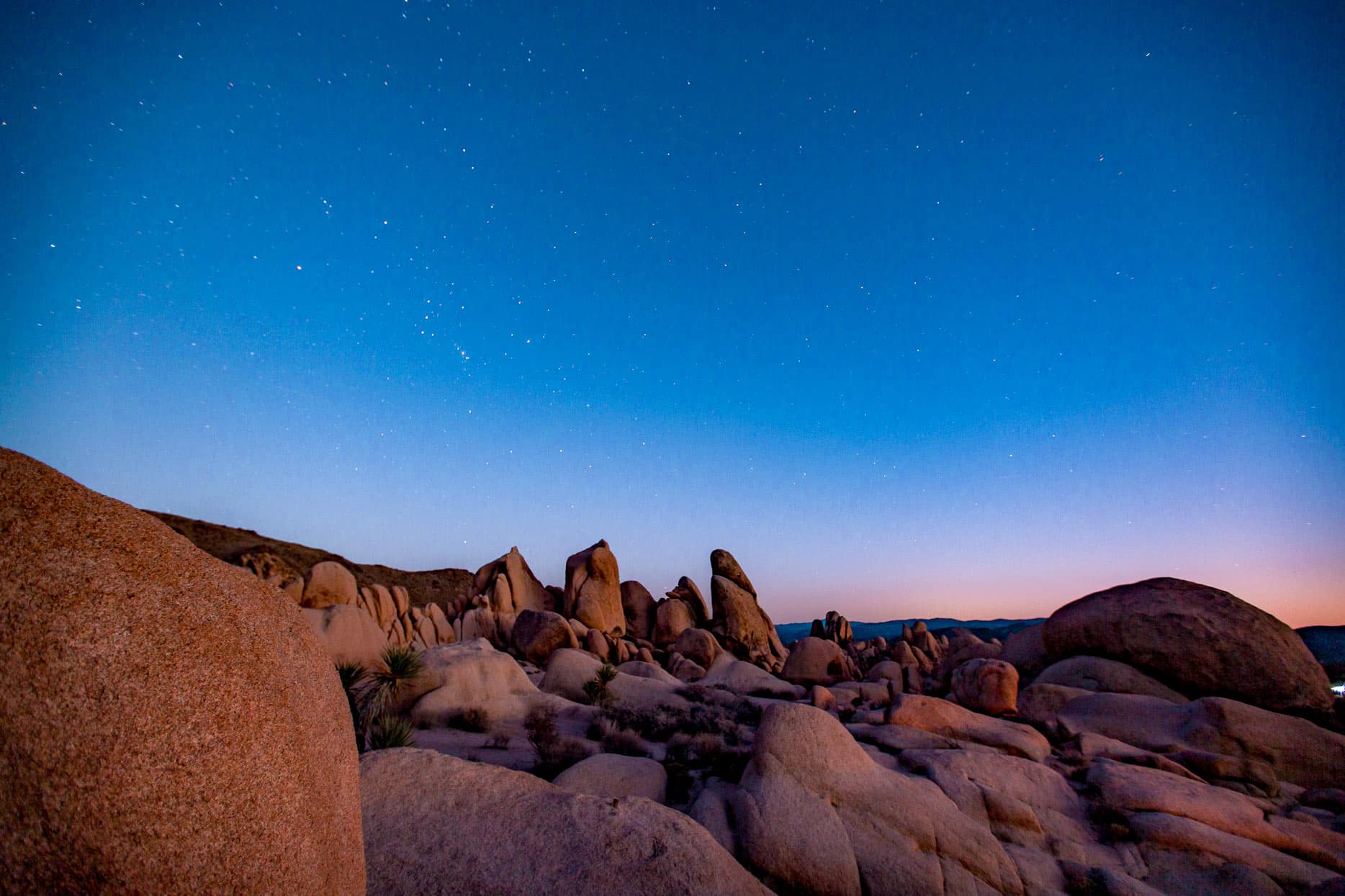
Photo Gallery – Joshua Tree National Park
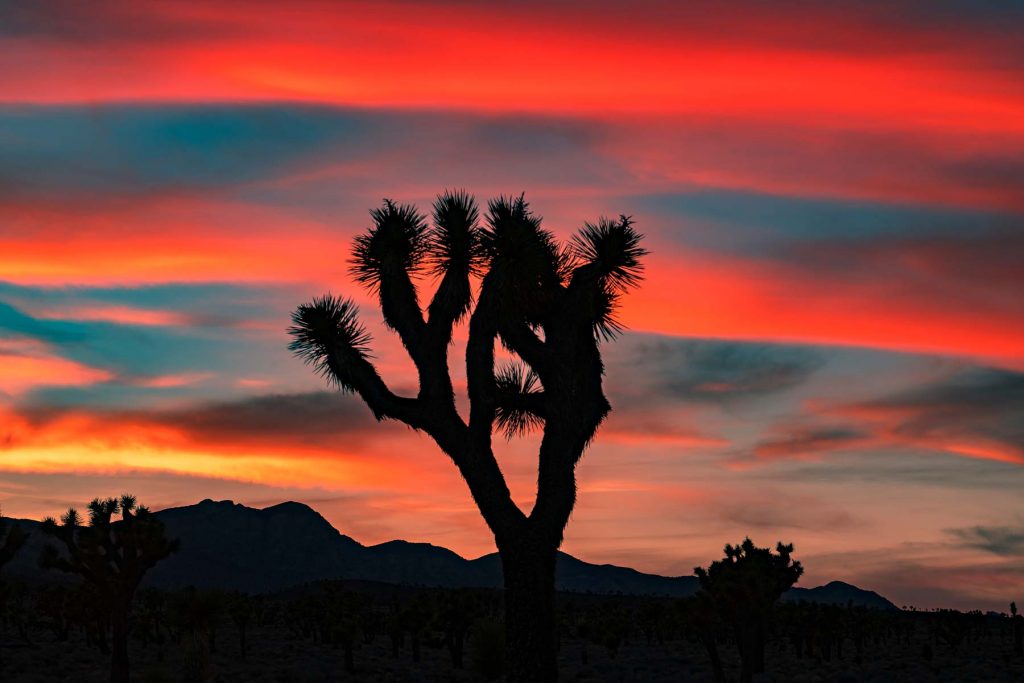
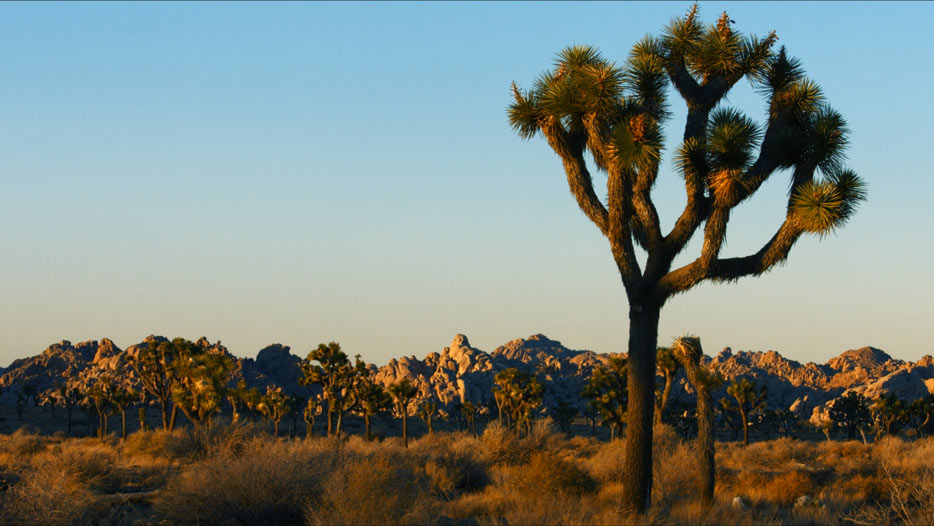
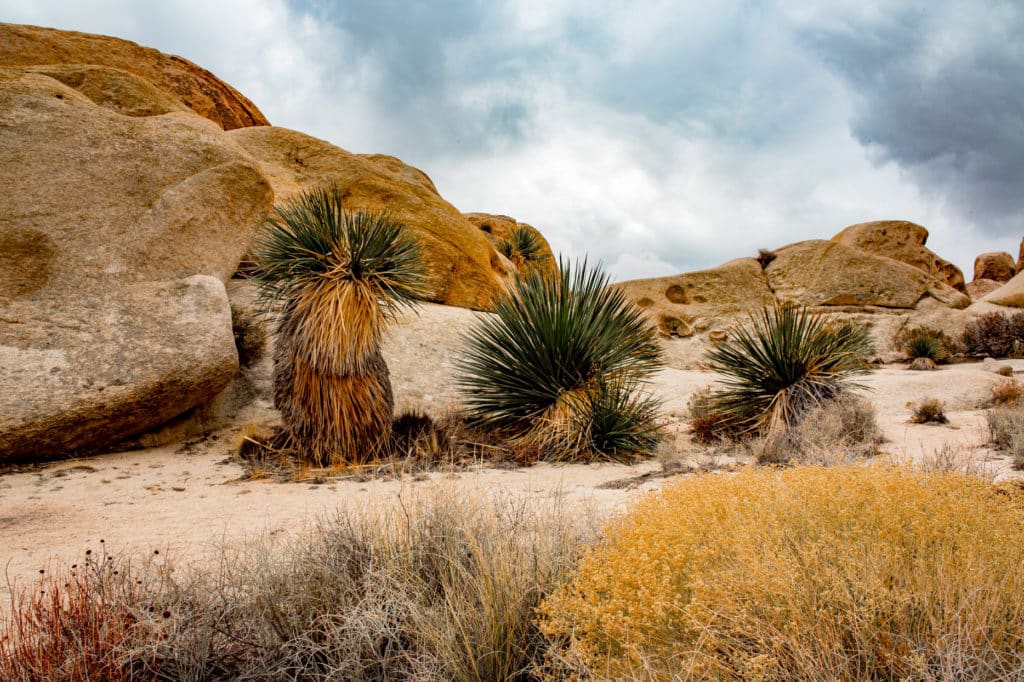
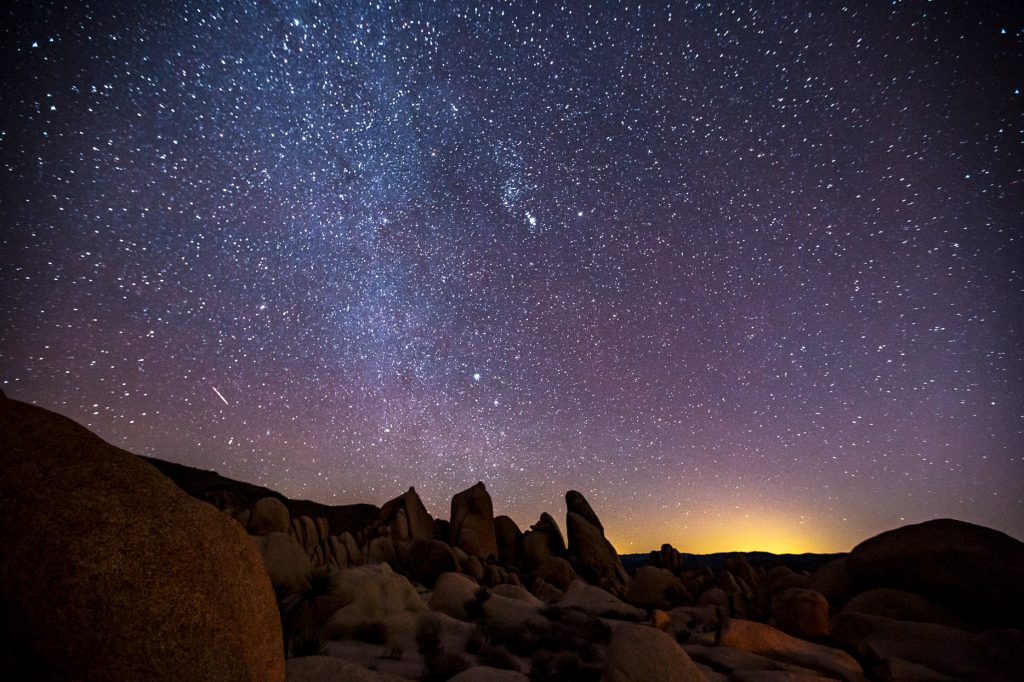
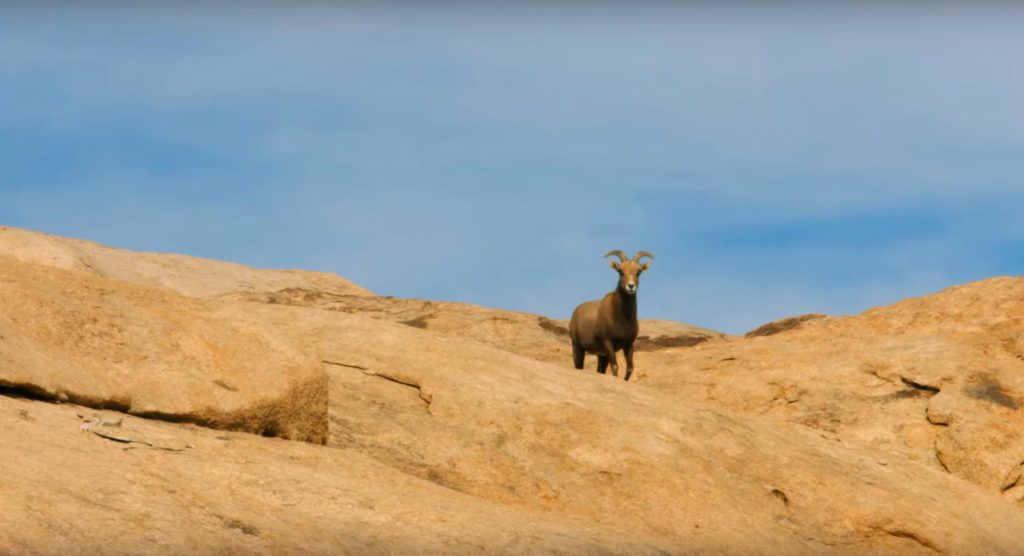
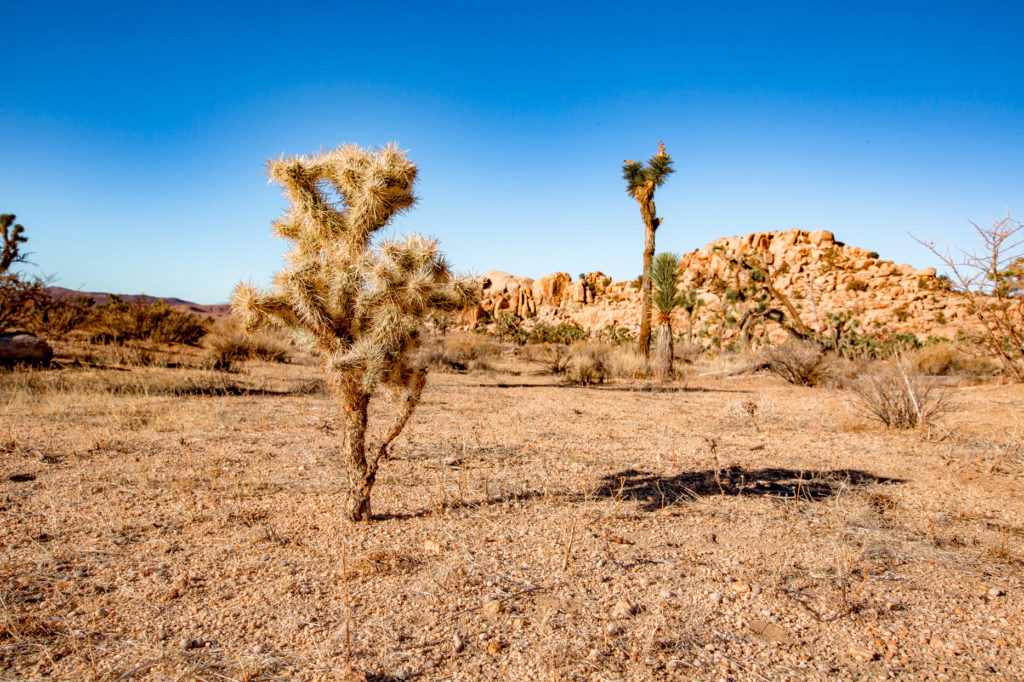
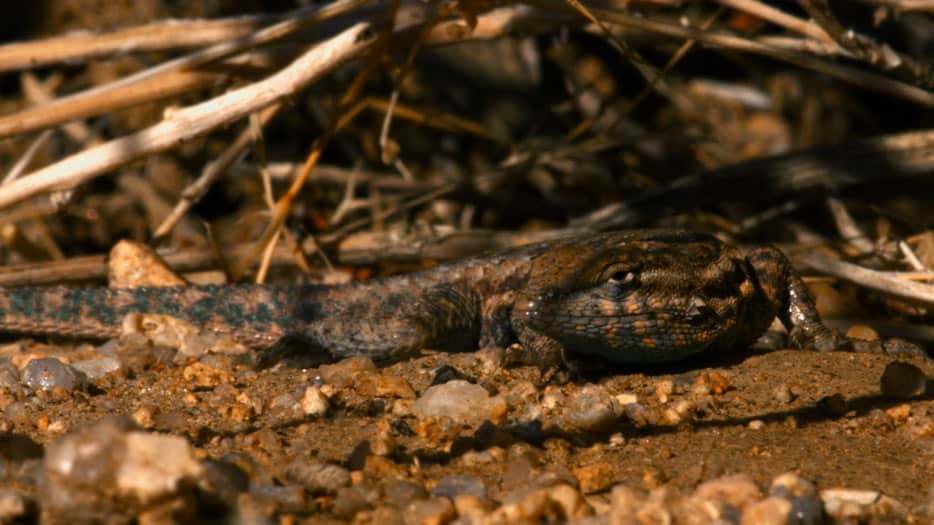
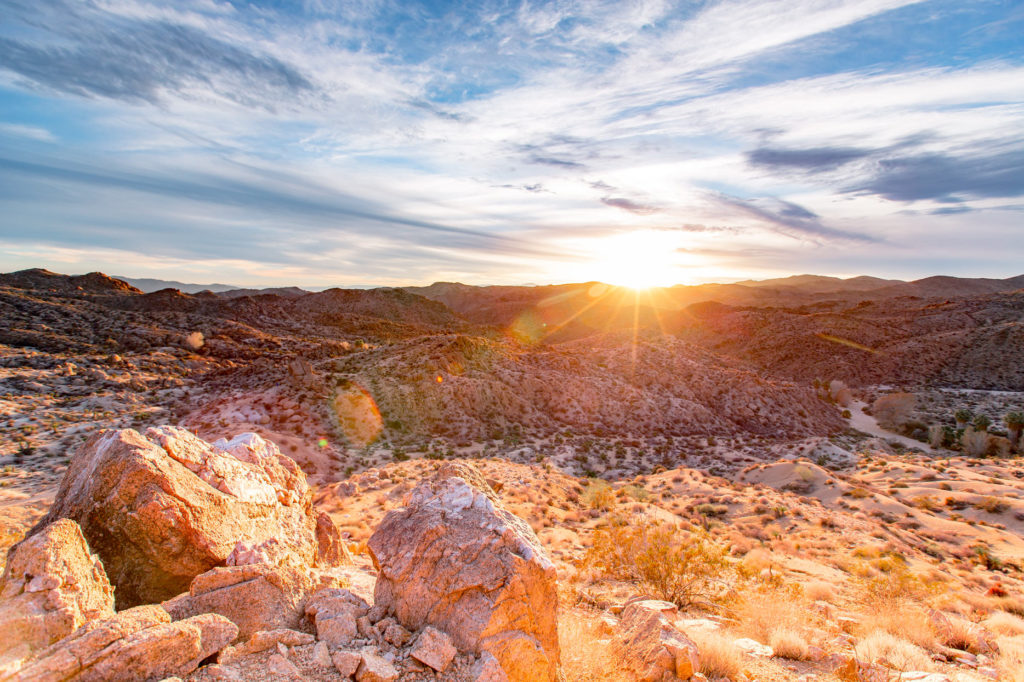
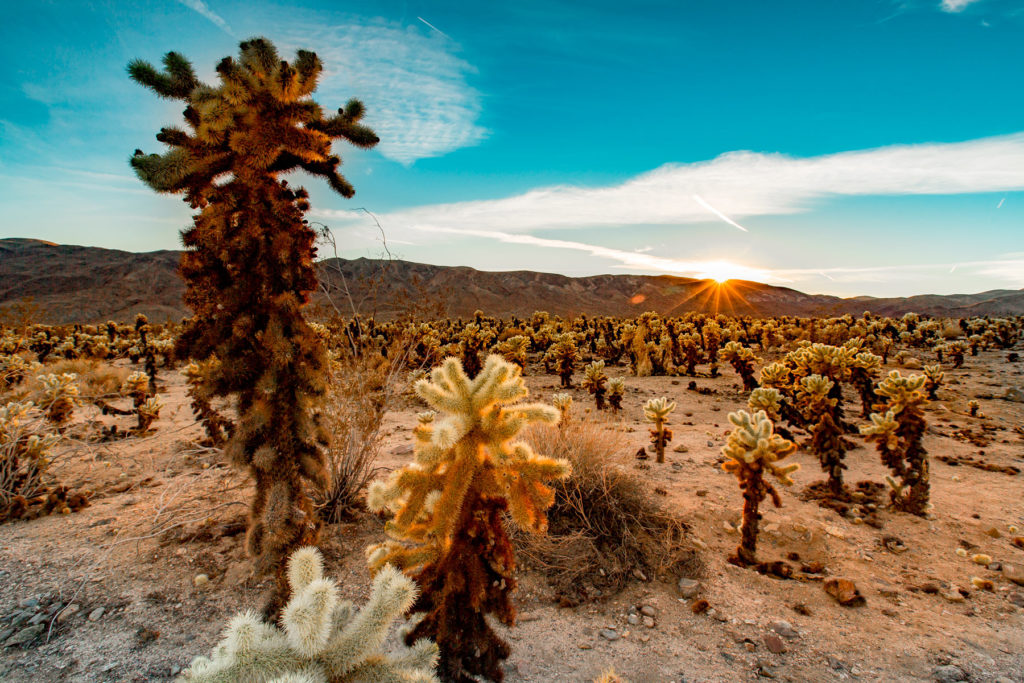
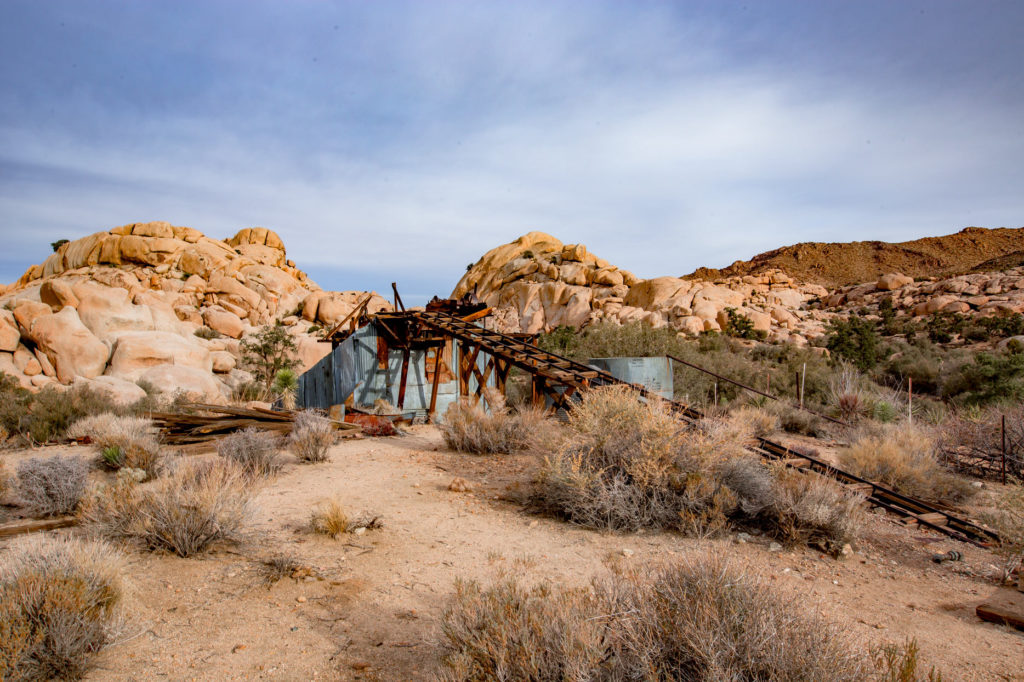
Nearby Attractions
- Death Valley National Park
- San Bernadino National Forest
- Mojave National Preserve
- Anza-Borrego Desert State Park
- Sand to Snow National Monument
See Our Full National Park Rankings
We actually ranked ALL 63 National Parks from best to worst using the same point system featured in this article here. Curious to see how California’s parks stack up against the rest of the parks nationwide? Click here!
Summary | Leave Us a Comment!
That’s a wrap! Hopefully you feel like you’ve gleaned everything you need to know for your next trip to Joshua Tree National Park. Feel free to leave a comment below and let me know if you have any questions or thoughts!
Hope to see you on the trails sometime soon!
Helpful Related Articles
Best Things to Do Joshua Tree: 25 Epic Things to Do in Joshua Tree National Park
Joshua Tree Guide: Joshua Tree National Park Ultimate Guide
Things to Do Death Valley: 18 EPIC Things to Do in Death Valley National Park
San Diego National Parks: 6 AMAZING National Parks Near San Diego
Los Angeles National Parks: 7 Epic National Parks Near Los Angeles
Road Trip Essentials: 35+ Road Trip Essentials You’ll Love (+ Packing List)
Road Trip Planning Tools: 15 Best Free Road Trip Planning Tools (& Apps) 2022
Best Hiking Apps: 20 Best Hiking Apps for All Skill Levels
Redwood National Park: Redwood National Park Ultimate Guide
Things to Do Redwood National Park: 15 EPIC Things to Do in Redwood National Park
Death Valley National Park Guide: Death Valley National Park Ultimate Guide
Things to Do Pinnacles National Park: 10 Epic Things to Do in Pinnacles National Park
Redwoods Near San Francisco: 15 BEST Places to See Redwoods Near San Francisco
San Francisco National Parks: 8 BEST National Parks Near San Francisco
Yosemite Facts: 10 Shocking Yosemite National Park Facts
Sequoia Facts: 10 GIANT Sequoia Tree & National Park Facts
West Coast Parks: 20 BEST West Coast National Parks Ranked by Experts
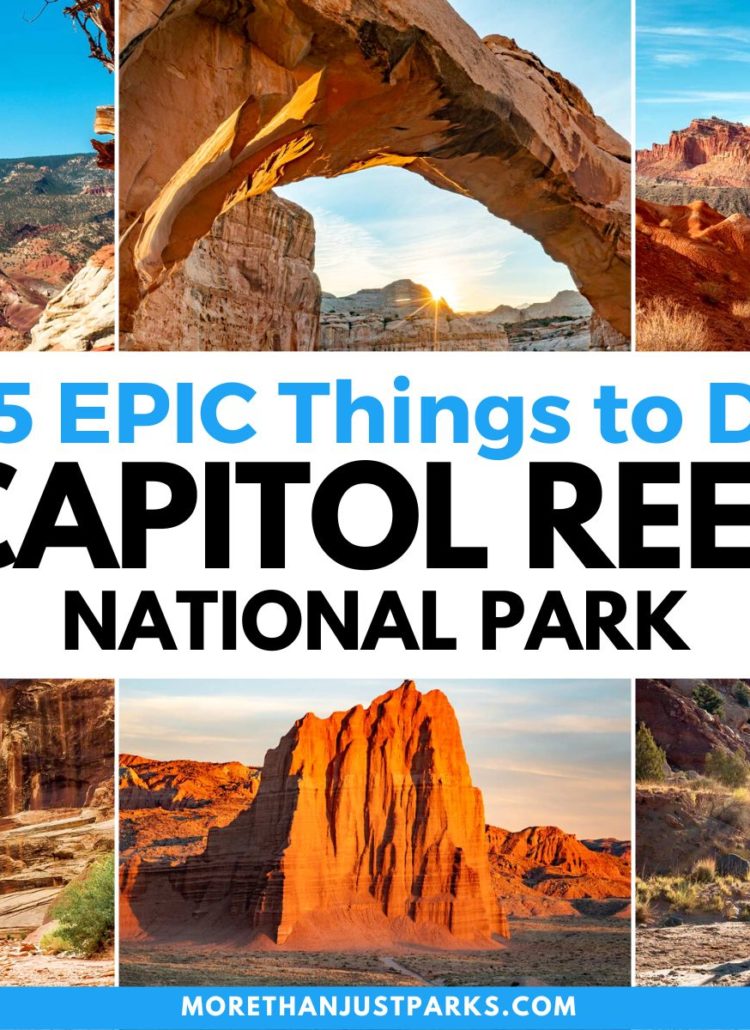
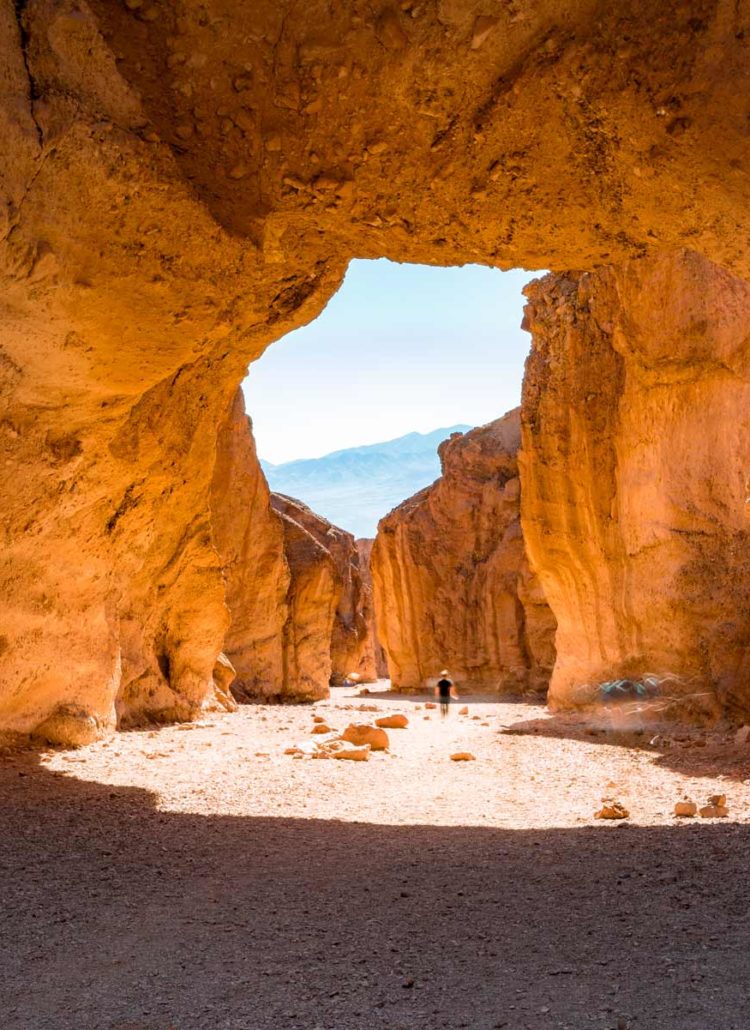
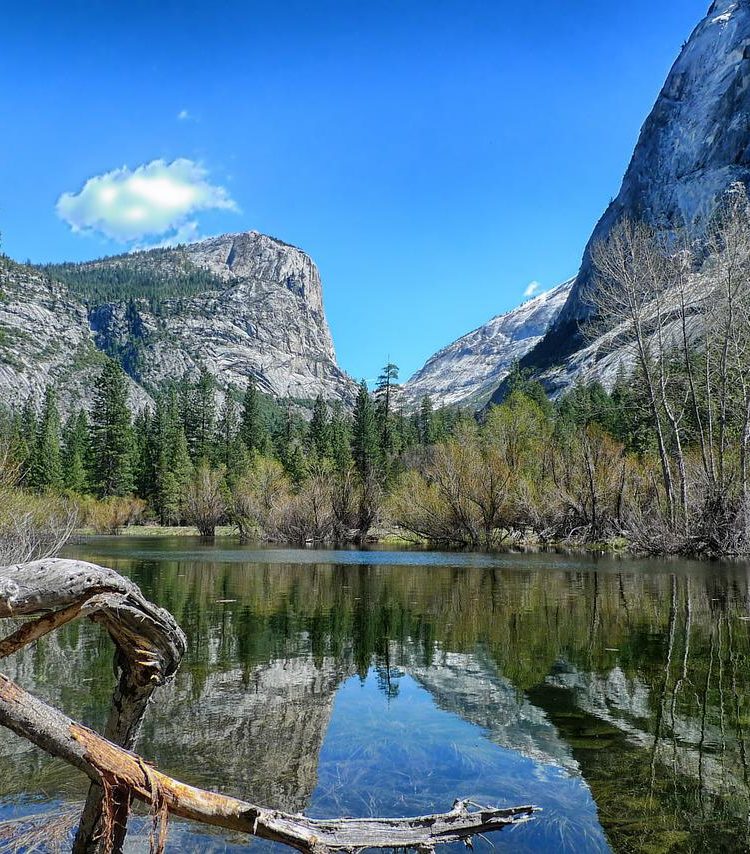
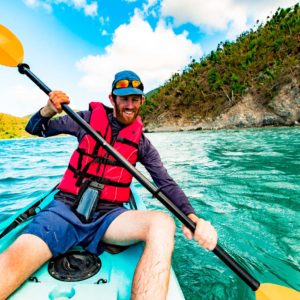

Leave a Reply